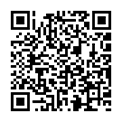 |
編目園地推出LINE服務囉! 歡迎掃描QR Code立即加入編目園地的LINE@帳號, 每月編目園地的更新內容、國內外資訊組織報導等訊息將一次提供給您! |
-
技術規範訊息
-
OCLC發布〈FAST Quick Start Guide〉
-
由 FAST 政策和推展委員會(The FAST Policy and Outreach Committee)的 Chew Chiat Naun、Kerre Kammerer、Kim Mumbower 和 Dean Seeman 共同編寫之〈FAST Quick Start Guide〉,於2022 年 4 月正式在 OCLC 有關 FAST 網頁上發布。
「FAST」為「主題術語分面應用」(Faceted Application of Subject Terminology)之簡稱,係衍自美國國會圖書館標題表(Library of Congress Subject Headings, LCSH),為目前圖書館領域使用最廣泛的主題術語,FAST始於1998年底,由 OCLC 研究部門(OCLC Research)及美國國會圖書館共同發展。
國際上各圖書館等相關機構之所以使用 FAST,在於 FAST 具備高效且直覺、可搭配 LCSH(FAST 與 LCSH 相容,使得 FAST 和 LCSH 可共存於書目及目錄中,而 FAST 更利於提供關鍵字的檢索服務)、能自動產生、富有彈性、免費等優點。且由於 FAST 的彈性化、易使用性和模組化,因而被廣泛地用於非圖書館目錄環境中,包括數位圖書館和資料庫、檔案管理系統,並作為索引系統的 詞彙表,可供其他詮釋資料規範(例如:Dublin Core、MODS)著錄內容主題之依據。
〈FAST Quick Start Guide〉旨在引導使用者如何開始使用 FAST、如何在 SearchFAST 網站上查詢 FAST 主題術語、FAST 主題術語的種類、FAST 在圖書館目錄上的應用(例如:如何在 MARC 21 書目紀錄上著錄 FAST、在 BIBFRAME 中如何使用及著錄 FAST 主題術語、以及在 Sinopia 編輯器(Sinopia editor)進行資料編輯時加上 FAST 主題術語)、如何利用 FAST 轉換器(FAST converter)將LCSH 轉為 FAST、了解 FAST 的 OpenRefin e協調服務(an OpenRefine reconciliation service for FAST)。
有關FAST鏈結資料方面,OCLC採用 schema.org 和 SKOS(Simple Knowledge Organization System)進行鏈結資料的格式化,並將 FAST 與 LCSH 權威以及其他權威來源(例如:VIAF、GeoNames 和 Wikipedia)進行鏈結,並盡可能繼續增加其他鏈結。此外,有關 FAST 資料集(FAST dataset)的下載,提供包括 MARC XML、RDF、ISO 2709 等資料格式,且 OCLC 還提供了FAST 鏈結資料應用程式介面(FAST Linked Data API)服務。
截至2022年1月3日,OCLC WorldCat上已有 145,416, 400 筆書目紀錄含括 FAST,幾近 OCLC WorldCat 上 150,603,300 筆書目紀錄含括 LCSH,顯見 FAST 自 1998 年底至今短短 23 年,已廣泛地被全球圖書館之書目與目錄所採用,因此〈FAST Quick Start Guide〉內容中也建議抄錄編目之圖書館,遇來源書目中有 FAST 主題術語,儘量將其保留,以供未來可能的進一步應用。
-
-
編目園地快報
-
更新國家圖書館學位論文相關代碼表
-
更新 國家圖書館學位論文學校及系所(新增3校;修改1校)
新增 國家圖書館學位論文系所名稱或代碼新增、修訂一覽表(111年4月底修訂表)
-
-
資訊組織文獻
-
Using Linked Data to create provenance-rich metadata interlinks: the design and evaluation of the NAISC-L interlinking framework for libraries, archives and museums
-
Linked data (LD) have the capability to open up and share materials, held in libraries, archives and museums (LAMs), in ways that are restricted by many existing metadata standards. Specifically, LD interlinking can be used to enrich data and to improve data discoverability on the Web through interlinking related resources across datasets and institutions. However, there is currently a notable lack of interlinking across leading LD projects in LAMs, impacting upon the discoverability of their materials. This research describes the Novel Authoritative Interlinking for Semantic Web Cataloguing in Libraries (NAISC-L) interlinking framework. Unlike existing interlinking frameworks, NAISC-L was designed specifically with the requirements of the LAM domain in mind. The framework was evaluated by Information Professionals (IPs), including librarians, archivists and metadata cataloguers, via three user-experiments including a think-aloud test, an online interlink creation test and a field test in a music archive. Across all experiments, participants achieved a high level of interlink accuracy, and usability measures indicated that IPs found NAISC-L to be useful and user-friendly. Overall, NAISC-L was shown to be an effective framework for engaging IPs in the process of LD interlinking, and for facilitating the creation of richer and more authoritative interlinks between LAM resources. NAISC-L supports the linking of related resource across datasets and institutions, thereby enabling richer and more varied search queries, and can thus be used to improve the discoverability of materials held in LAMs.
-
Integrated classification schemas to interlink cultural heritage collections over the web using LOD technologies
-
Libraries, archives, and museum collections are now being published over the web using LOD technologies. Many of them have thematic intersections or are related to other web subjects and resources such as authorities, sites for historic events, online exhibitions, or to articles in Wikipedia and its sibling resources DBpedia and Wikidata. The full potential of such published initiatives using LOD rests heavily on the meaningful interlinking of such collections. Within these contextual vocabularies and classifications, schemas are important, as they provide meaning and context to heritage data. This paper proposes comprehensive classification schemas—a CRR (Culturally Relevant Relationships) vocabulary and a classification schema of types of heritage objects—to order, integrate, and provide structure to cultural heritage data brought about with the publication of heritage collections as LOD.
-
國家圖書館編目園地電子報 第255期 2022/06/01發行
編輯:國家圖書館館藏發展及書目管理組
創刊日期:2001/4/2
本報著作權屬「國家圖書館」所有
服務信箱:catadm@ncl.edu.tw